Kneel into the roots of Rastafari in the Bible and discover how ancient scriptures illuminate this modern spiritual movement.
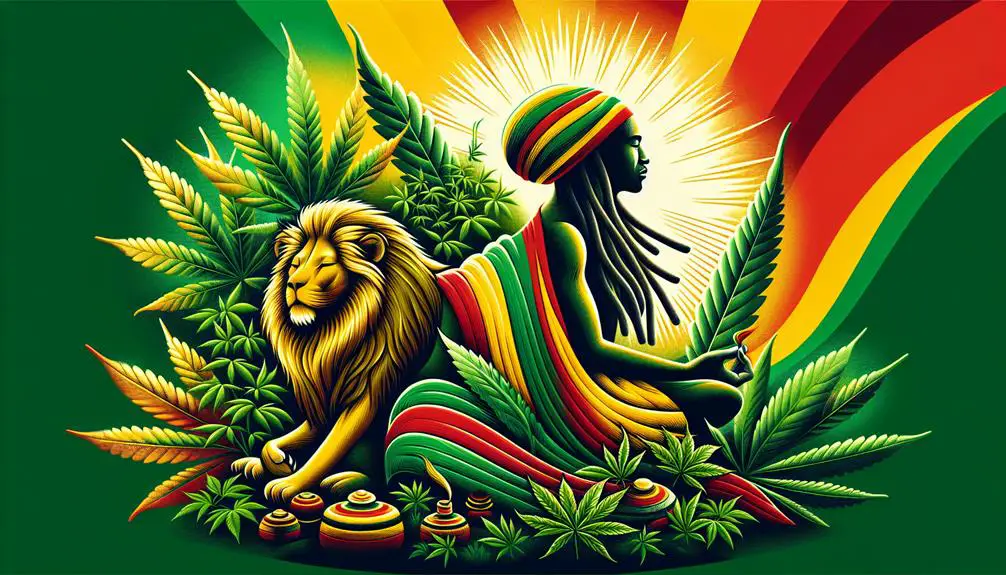
Rastafari in the Bible
In the vibrant tapestry of spiritual beliefs, Rastafari stands out, yet it's deeply rooted in ancient Biblical traditions. You might find it surprising how a modern movement intertwines with age-old scriptures, drawing connections that have sparked both inspiration and controversy.
As you explore the Biblical roots of Rastafari, from the Lion of Judah symbolism to the prophesied role of Haile Selassie, you'll uncover layers of meaning that challenge conventional interpretations. This journey promises to reveal not just the spiritual underpinnings of Rastafari, but also how it redefines our understanding of sacred texts in a contemporary context.
Curiosity piqued? Let's explore further.
Key Takeaways
- Rastafari deeply intertwines Biblical narratives, emphasizing prophets and the Lion of Judah in its spiritual foundation.
- Biblical texts guide Rastafarian beliefs, including cannabis's role in achieving divine communion and spiritual enlightenment.
- The movement interprets certain scriptures as validations of its practices and symbols, like the sacredness of cannabis.
- Rastafarians see their faith and practices, including the use of cannabis, as fulfilling Biblical prophecy and covenant.
Origins of Rastafari
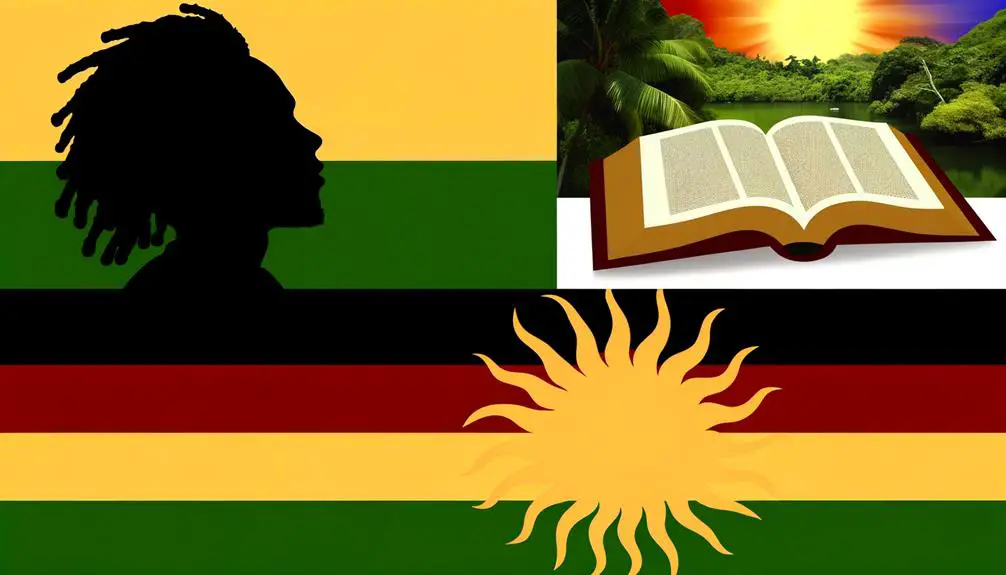
The Rastafari movement, tracing its roots back to the 1930s in Jamaica, emerged as a response to colonial oppression and the longing for African identity and heritage. Central to its formation was the Ethiopian influence, coupled with the teachings of Marcus Garvey, a pivotal figure in promoting African pride and self-determination. Garvey's philosophy of pan-Africanism laid a foundation that deeply resonated with the early Rastafarians, instilling a vision of returning to African roots and culture.
Garvey's prophecy, 'Look to Africa, where a black king shall be crowned, for the day of deliverance is near,' was a catalyst for the movement. This proclamation, made in the 1920s, found fulfillment in the eyes of Rastafarians with the coronation of Emperor Haile Selassie I of Ethiopia in 1930. They interpreted Selassie's ascension to the throne as the realization of Garvey's prediction, which solidified the Ethiopian influence within the movement. Ethiopia, viewed by Rastafarians as Zion, became the spiritual homeland, a symbol of hope and redemption.
Furthermore, Marcus Garvey's advocacy for economic independence and social justice in the Caribbean and the Americas inspired Rastafarians to resist colonial and neo-colonial structures. They adopted Garvey's ideas, intertwining them with their own spiritual beliefs, to forge a unique identity that celebrated African heritage and resisted the degradation experienced under colonial rule.
Biblical Roots of the Movement
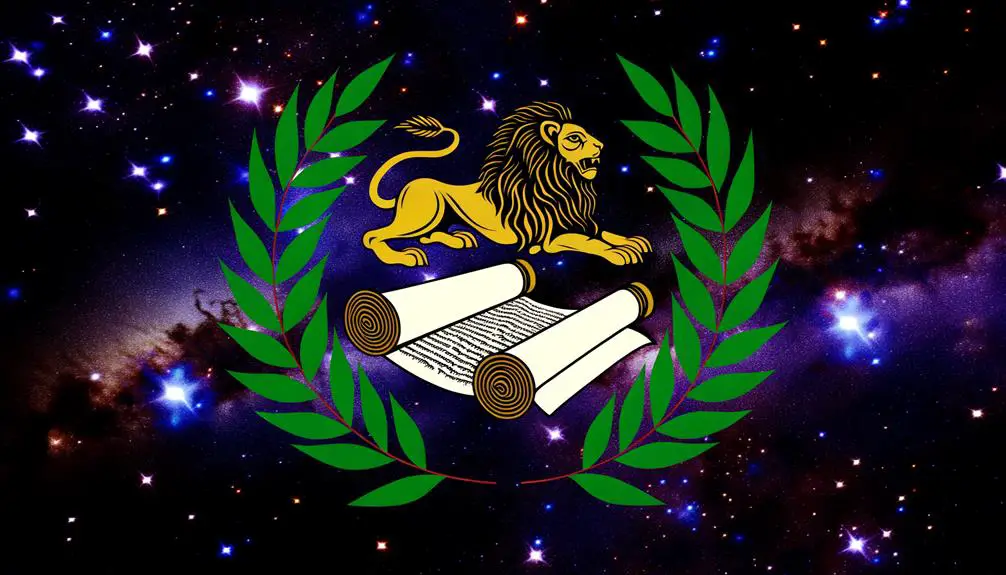
You observe that the Rastafari movement's foundation is deeply intertwined with Biblical narratives, particularly through its origins in Scripture, emphasis on prophets and prophecy, and the significant symbolism of the Lion of Judah.
These elements not only provide spiritual depth but also connect followers to a rich tradition of Biblical interpretation and fulfillment.
Analyzing these aspects reveals how the movement situates itself within a broader religious and historical context, underscoring its theological and cultural significance.
Origins in Scripture
Rastafari beliefs find their roots in specific interpretations of Biblical scripture, reflecting a deep connection to ancient prophetic traditions. This movement intricately ties its principles to Ethiopian Christianity and the revered Solomonic dynasty, which is believed to originate from the union of King Solomon and the Queen of Sheba, a story deeply embedded in Biblical lore.
Key aspects include:
- Ethiopian Christianity: A pivotal influence, drawing connections to early Christian traditions and the belief in Ethiopia as a sacred space.
- Solomonic dynasty: Central to Rastafari identity, symbolizing a direct lineage to Biblical kings and a divine right to leadership.
- Biblical scripture: Used as a foundational text, offering a unique interpretation that aligns with Rastafari spirituality and values.
Prophets and Prophecy
Within the Rastafari movement, biblical prophets and their prophecies play a crucial role, serving as a foundation for its spiritual and societal teachings. These figures are revered for their intimate connection with the divine, often evidenced through miraculous healings and divine visions. These accounts aren't merely ancient tales but are viewed as living testimonies that continue to influence the Rastafari ethos.
Analyzing these biblical narratives, one observes a direct line to Rastafari principles. The prophets' experiences with the divine, marked by profound revelations and supernatural occurrences, underscore a belief in a living God actively involved in human affairs. This perspective fosters a spiritual environment where followers seek to embody the righteousness and divine mission exemplified by these ancient seers, aiming for a societal transformation rooted in justice, peace, and spiritual awakening.
Lion of Judah Symbolism
Central to the Rastafari movement's symbolism is the Lion of Judah, a biblical emblem rooted deeply in the ancient traditions and scriptures of Judaism and Christianity. This symbol transcends mere zoological representations to embody strength, sovereignty, and protection. It's fascinating how this emblem has woven itself into the fabric of Rastafari identity, reflecting both spiritual significance and cultural influences.
Let's explore its multidimensional impact:
- Zoological representations: The lion symbolizes bravery and power, traits highly valued in Rastafari ideology.
- Cultural influences: The Lion of Judah connects Rastafari to Ethiopian traditions, asserting a lineage to King Solomon and the Queen of Sheba.
- Spiritual significance: It signifies the divine right to rule, echoing the messianic expectations in Revelation 5:5.
Haile Selassie and the Messiah
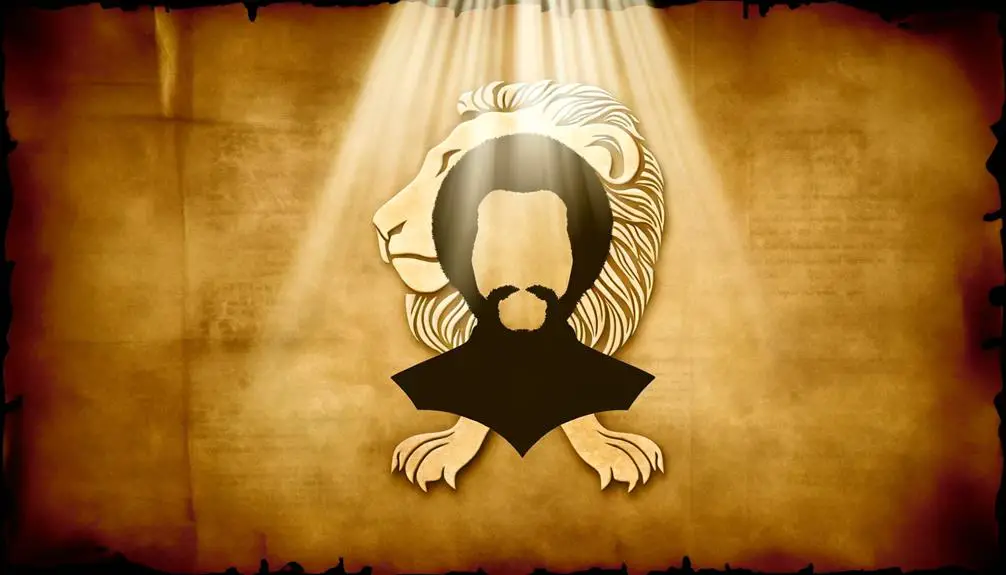
Many view Haile Selassie, the former Emperor of Ethiopia, as a messianic figure, a belief deeply rooted in his unexpected link to biblical prophecies. This perception isn't merely based on his charismatic leadership or the significant socio-political reforms he championed; rather, it's intertwined with his imperial lineage and adept diplomacy, which underscore his unique standing in modern history and biblical interpretations.
Selassie's diplomacy, notably his efforts to modernize Ethiopia and his appeals to the League of Nations during the Italian invasion, showcased his commitment to peace and justice, qualities often associated with messianic figures. Furthermore, his imperial lineage, claiming descent from King Solomon and the Queen of Sheba, provides a tangible link to the biblical past, reinforcing his messianic image among followers.
Critically examining this belief, it's essential to distinguish between the symbolic and the literal interpretations of messianic prophecies. Selassie himself modestly refuted claims of his divinity, emphasizing his mortal nature. However, his life and works have been interpreted by many as fulfilling biblical prophecies, particularly those associated with a messiah who'd lead people to freedom and enlightenment.
The Lion of Judah Symbolism
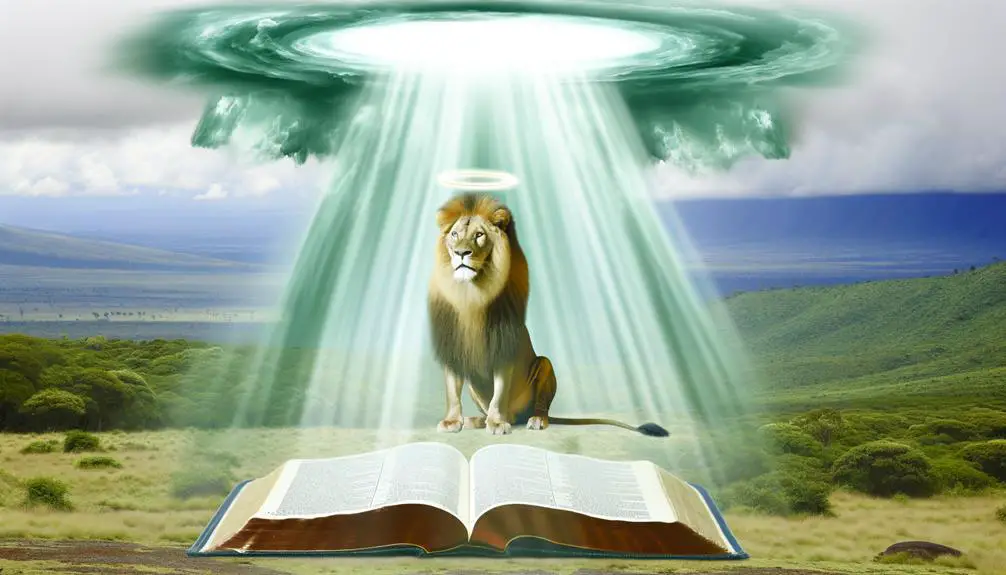
Building on the discussion of Haile Selassie's messianic image, it's crucial to explore the Lion of Judah symbolism, which further cements his biblical connections and significance. This emblem, rich in historical and religious connotations, offers a profound insight into the Rastafari movement's foundations and beliefs.
From zoological perspectives, the lion embodies strength, majesty, and leadership, qualities attributed to the biblical tribe of Judah, from which, according to Rastafari belief, Selassie descends. This connection not only elevates Selassie's status in the eyes of his followers but also intertwines the natural world with spiritual significance, creating a powerful symbol of divine right and authority.
Cultural appropriations of the Lion of Judah have further expanded its reach and meaning. This symbol has been adopted in various contexts, transcending its original religious implications to represent resistance, freedom, and the struggle against oppression. Through this lens, the Lion of Judah becomes a unifying emblem, bridging diverse communities and ideologies.
To engage further, consider the following aspects:
- The historical origins of the Lion of Judah and its biblical references.
- How zoological attributes of the lion complement the symbolic meanings in Rastafari culture.
- The role of cultural appropriations in diversifying the symbol's significance and relevance.
Analyzing the Lion of Judah symbolism reveals a complex interplay between religious tradition, zoological admiration, and cultural significance. This emblem not only highlights Selassie's pivotal role within the Rastafari movement but also illustrates the dynamic processes of cultural adaptation and reinterpretation.
Babylon and Modern Society
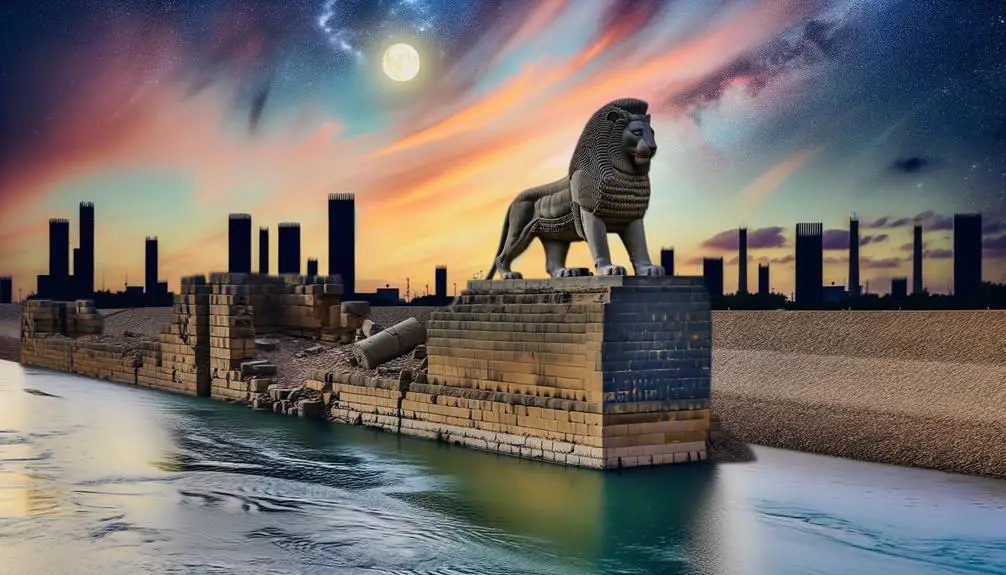
In the Rastafari worldview, 'Babylon' symbolizes the epitome of corruption, oppression, and materialism in modern society, starkly contrasting with their ideals of truth, freedom, and spiritual connection. This metaphorical Babylon extends its influence through global capitalism and cultural assimilation, which Rastafarians view as major threats to their way of life and spiritual beliefs.
Global capitalism, in this context, represents a system that prioritizes profit over people and the environment, leading to exploitation and inequality. You see its effects in the widening gap between the rich and the poor, the exploitation of labor, and the destruction of the natural world. For Rastafarians, this is a direct manifestation of Babylon's corrupt and materialistic nature, which prioritizes wealth accumulation over spiritual and communal values.
Cultural assimilation, another aspect of Babylon, threatens the unique identity and practices of the Rastafari and other indigenous cultures. It pressures individuals to conform to a homogenized global culture, often at the expense of their traditions, languages, and ways of life. This process of assimilation is seen as a tool of oppression, designed to erase differences and promote a singular, dominant culture that aligns with Babylon's interests.
In resisting Babylon, Rastafarians emphasize living in harmony with nature, practicing communal living, and fostering a deep spiritual connection. They reject the materialism and corruption of Babylon, striving instead for a society based on equality, justice, and respect for the earth. Through this lens, the Rastafari movement not only critiques modern society but also offers a vision of how to transcend its limitations.
Rastafari Eschatology
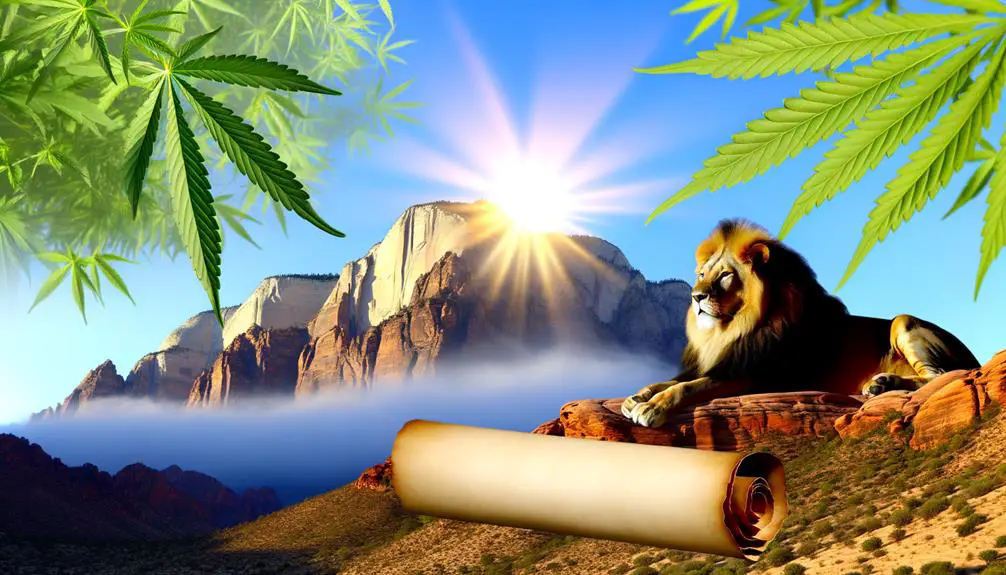
Understanding Rastafari eschatology requires a deep dive into its unique perspective on the end times and spiritual redemption, a vision deeply rooted in biblical prophecy and African heritage. This belief system interprets the Biblical prophecies with a particular focus on the liberation of oppressed peoples and the return to Zion, a concept that symbolizes both a physical and spiritual homeland.
Rastafari eschatology is distinctive in its approach to end times interpretations, viewing them not just as future events to come but as ongoing processes affecting the here and now. This perspective emphasizes:
- The importance of living in accordance with natural law and divine commandments as a preparation for the end times, suggesting a way of life that's in harmony with the Earth and its creator.
- The Zion concept as central to Rastafari eschatology, where Zion represents both the literal return to Africa for the African diaspora and a spiritual state of freedom, peace, and redemption.
- The interpretation of current global events as fulfillment of Biblical prophecy, seeing the struggles for justice and equality as signs of the approaching end times.
This analytical approach to Rastafari eschatology reveals a rich tapestry of belief that intertwines biblical prophecy with the lived experiences of African peoples and their diaspora. It's a worldview that offers both a critique of contemporary societal injustices and a hopeful vision for the future, grounded in the return to a promised spiritual and physical homeland. The Zion concept thus serves as a pivotal element in understanding Rastafari's unique end times interpretations.
The Significance of Dreadlocks
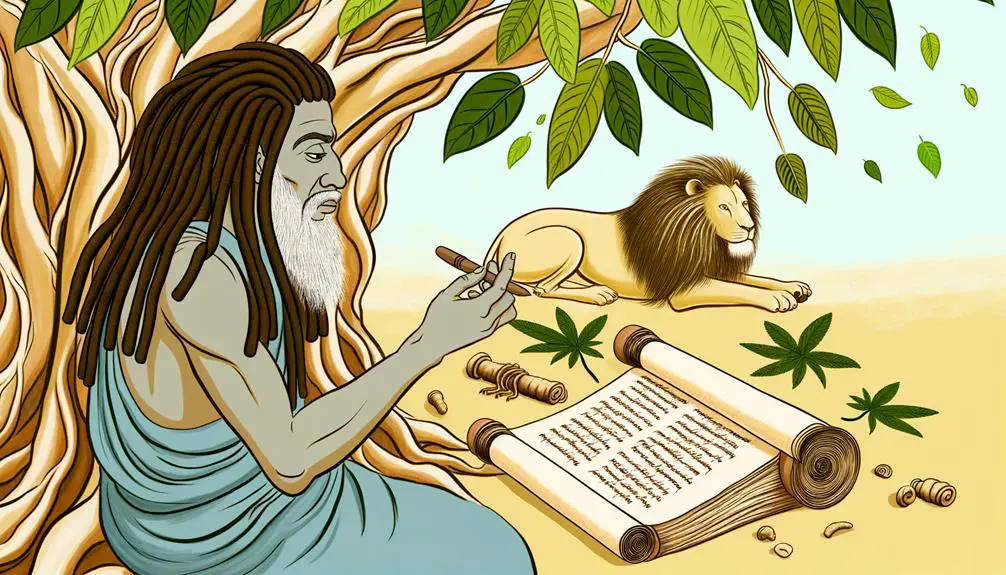
You must understand the multifaceted role dreadlocks play within the Rastafari movement, beginning with their historical origins.
The symbolism attached to dreadlocks in Rastafari culture is deeply rooted in biblical scriptures, offering a profound connection to spiritual beliefs and identity.
Examining biblical references reveals how dreadlocks have been embraced as a symbol of covenant and strength, underscoring their significance in Rastafari doctrine.
Origins of Dreadlocks
Dreadlocks hold profound spiritual and cultural significance within the Rastafari movement, symbolizing a direct connection to their interpretation of biblical teachings and a rejection of oppressive societal norms. This hair fashion not only serves as a spiritual vow but also as a statement against cultural appropriation, where elements of a minority culture are adopted by members of a dominant culture without permission.
- Cultural Significance: Dreadlocks are more than a hairstyle; they're a symbol of identity and resistance.
- Biblical Roots: The adoption of dreadlocks is inspired by specific biblical passages, setting a foundation for their spiritual journey.
- Against Cultural Appropriation: The Rastafari's adoption of dreadlocks challenges the mainstream's casual borrowing of minority cultural elements, advocating for respect and understanding.
Symbolism in Rastafari
Exploring the Rastafari movement further reveals how dreadlocks serve not only as a spiritual emblem but also embody deep-seated symbolism that resonates with their historical, cultural, and religious narratives. They're a testament to a commitment to natural living and a rejection of Western influences, including conventional beauty standards.
Symbol |
Significance |
|---|---|
Dreadlocks |
Spiritual journey and defiance against mainstream culture |
Lion of Judah |
Represents strength, African sovereignty, and the direct lineage to Emperor Haile Selassie |
Red, Gold, and Green |
Pan-African colors symbolizing the bloodshed, wealth, and the beauty of the homeland |
Ganja (Marijuana) |
Used sacramentally to achieve closer communion with the divine |
This symbolism extends to their musical influence, promoting unity and resistance, and dietary practices, advocating for purity and natural living.
Biblical References Explored
Many references within the Bible have been interpreted by Rastafarians to justify and celebrate the spiritual significance of dreadlocks. This practice connects deeply with their faith and understanding of biblical teachings. Analyzing this connection reveals:
- Jesus' teachings often emphasize spiritual purity and non-conformity, which Rastafarians see mirrored in the choice to wear dreadlocks, symbolizing a natural, unaltered state of being.
- The Pauline epistles, while not directly addressing hair, discuss freedom in Christ, which can be interpreted as freedom in physical expression, including dreadlocks.
- The Nazarite vow in the Old Testament, involving abstaining from cutting the hair, further supports the spiritual significance Rastafarians place on dreadlocks.
This interpretation showcases a profound connection between personal appearance and spiritual expression within the Rastafari movement.
Cannabis as a Sacrament
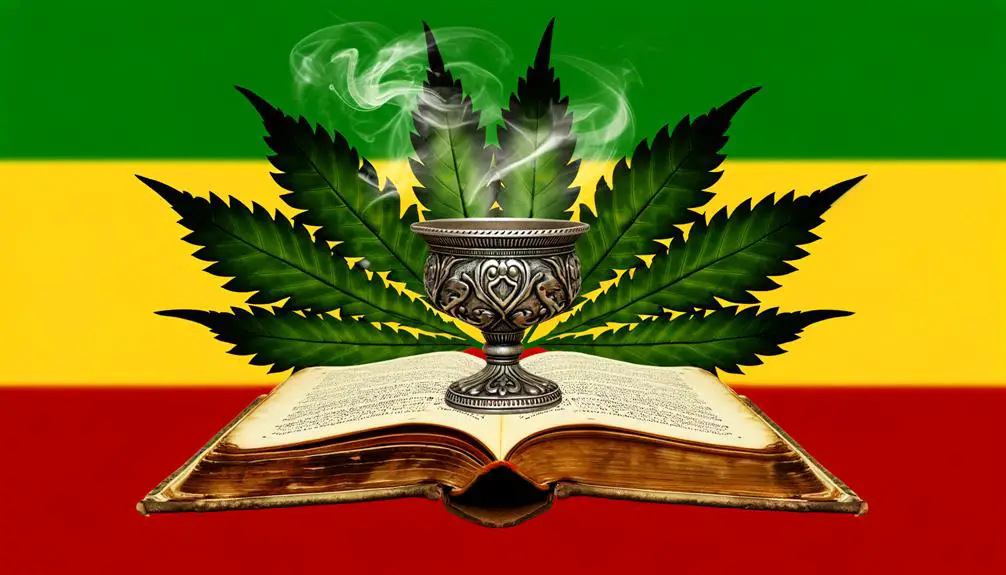
Within the Rastafari movement, cannabis holds a sacred status, serving as a sacrament that adherents believe brings them closer to the divine. This practice, deeply embedded in their spiritual rituals, underscores cannabis's multifaceted role beyond its recreational and medicinal uses. However, the journey towards medical legalization has sparked debates on cultural appropriation. As countries increasingly acknowledge cannabis's therapeutic benefits, there's a growing concern that the commercialization and mainstream acceptance might overlook or exploit the cultural and religious significance it holds for the Rastafari community. This tension highlights a broader issue of how traditional spiritual practices are assimilated and repackaged within global markets.
The sacramental use of cannabis in Rastafari is more than a mere act of consumption. It's a deeply ritualistic practice, intended to cleanse the body and mind, facilitating a spiritual connection with the divine. This use is rooted in a reading of biblical texts, with Rastafarians interpreting certain passages as endorsements of the herb's sacredness. They argue that cannabis serves as a vehicle for understanding, wisdom, and a means to achieve a closer communion with God.
The scholarly analysis of cannabis as a sacrament in the Rastafari faith necessitates a balanced view that respects its religious and cultural dimensions while considering the broader implications of its legalization. As the conversation around cannabis evolves, it's crucial to recognize and preserve the integrity of its use in spiritual practices, ensuring that these traditions aren't overshadowed or diluted by commercial interests. This approach not only honors the religious rights of the Rastafari but also enriches our understanding of the complex interplay between spirituality, culture, and law.
Frequently Asked Questions
How Has the Global Perception of Rastafari Changed Over the Last Decade?
Over the last decade, you've seen the global perception of Rastafari evolve significantly.
Music influence and celebrity endorsements have played pivotal roles in this shift. Artists and public figures have brought Rastafari beliefs and aesthetics into the mainstream, fostering a broader acceptance and curiosity.
This exposure hasn't only demystified the movement but also sparked scholarly interest, leading to a more nuanced understanding that transcends previous stereotypes and misconceptions.
Are There Notable Differences in Rastafari Practices and Beliefs Across Different Countries?
Yes, there are notable differences in Rastafari practices and beliefs across countries, much like a tapestry with varied patterns.
These variations manifest in cultural adaptations and dietary variances, reflecting the local customs and resources.
While the core beliefs remain consistent, such as the importance of Haile Selassie and the rejection of Babylon, the way these beliefs are practiced can differ significantly, illustrating the religion's adaptability to diverse cultural landscapes.
How Do Rastafarians Navigate Conflicts Between Their Spiritual Practices and the Laws of Their Countries, Especially Regarding Cannabis Use?
Navigating conflicts between spiritual practices and country laws is a complex challenge for Rastafarians, especially regarding cannabis use.
Rastafarians often employ legal strategies and cultural adaptation to address these conflicts.
You might find them advocating for religious freedom, engaging in legal battles, or adapting practices to align with local regulations.
This balance involves a keen understanding of both spiritual conviction and the legal landscape.
It ensures their practices can coexist with national laws, thereby maintaining their religious integrity while respecting legal boundaries.
What Role Do Women Play in the Rastafari Movement, and How Has This Evolved Over Time?
In the Rastafari movement, women's roles have transformed significantly, akin to how a seed evolves into a lush tree. Initially, gender roles were rigid, with men dominating spiritual leadership.
Over time, these boundaries have softened, allowing women to ascend in spiritual and leadership capacities. This evolution reflects a broader shift towards gender equality within the movement, marking a departure from traditional views and embracing a more inclusive approach to spiritual guidance and community roles.
How Do Rastafarians View the Relationship Between Their Spiritual Beliefs and Environmental Conservation?
You'll find that Rastafarians deeply intertwine their spiritual beliefs with environmental conservation, seeing the earth as a manifestation of the divine.
They regard nature as sacred, embodying this through practices such as using 'green sacraments' to honor the earth.
This perspective has led to a strong emphasis on living in harmony with the environment, reflecting a belief in the sanctity of all creation and the importance of preserving it for future generations.
Conclusion
In conclusion, Rastafari intricately weaves biblical narratives into its fabric, casting Haile Selassie as a modern Messiah and adopting symbols like the Lion of Judah with profound religio-political meanings. This movement critiques Babylon, or corrupt modern society, through a lens of spiritual liberation.
Its eschatological views and practices, including the ritualistic use of cannabis and dreadlocks, aren't mere cultural appendages but pillars of a deeply rooted theological framework. Rastafari, then, is a tapestry where ancient scripture meets contemporary resistance, illuminating pathways to spiritual and societal renewal.

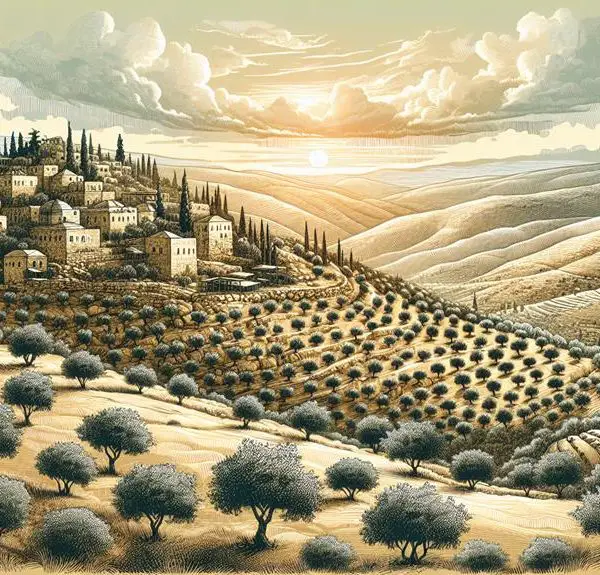
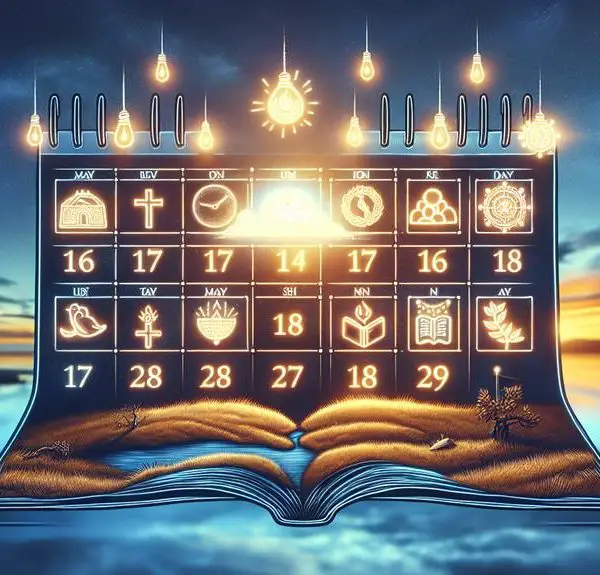
Sign up